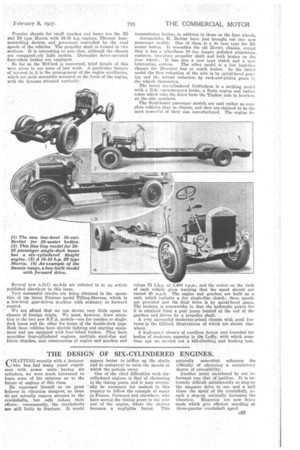THE DESIGN OF SIX-CYLINDERED ENGINES.
Page 101

If you've noticed an error in this article please click here to report it so we can fix it.
CrIATTING recently with a designer who has had many years' -experience with power units having six cylinders, we were much interested to learn some of his opinions as to the future of engines of this class.
He expressed himself as no great believer in vibration dampers, as these do not actually remove stresses in the crankshafts, but only reduce their effects; consequently, the crankshafts are still liable to fracture. It would
appear better to stiffen up the shafts and to endeavour to raise the speeds at which the periods occur.
One of the chief difficulties with sixcylindered engines is that of chattering in the timing gears, and it may eventually be necessary for makers in this country to follow the example of many in France, Germany and elsewhere, who have moved the timing gears to the rear end of the engine, where the chatter becomes a negligible factor. This
naturally somewhat enhances the i;ifficulty of obtaining a satisfactory degree of accessibility.
Another point mentioned by our informant was that of ignition. It is extremely difficult satisfactorily to step-up the magneto drive to one and a half times the speed of the crankshaft, as such a step,up naturally increases the vibration. Magnetos are now being made which give efficient sparking at three-quarter crankshaft sneed:




































































































































































































